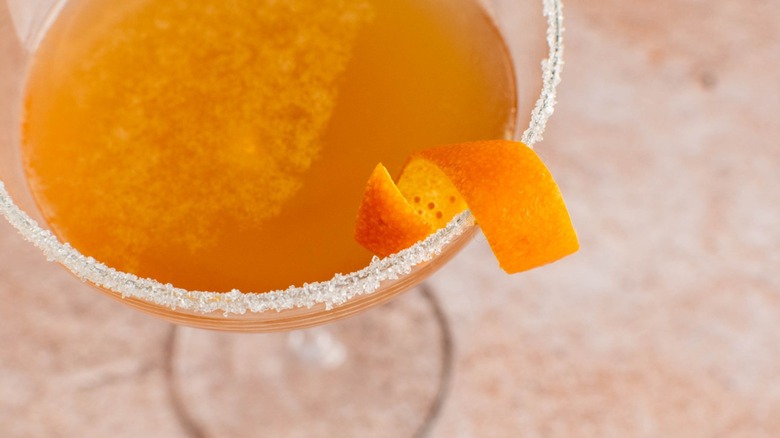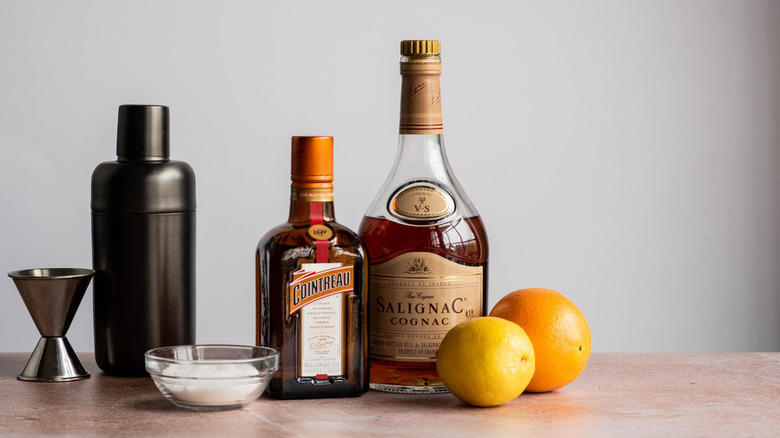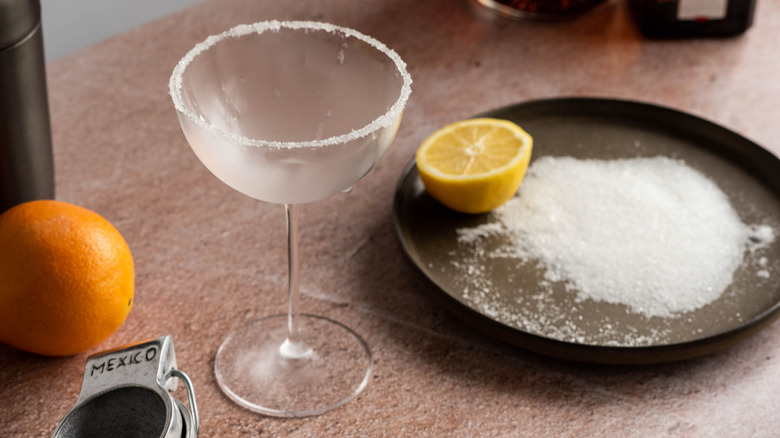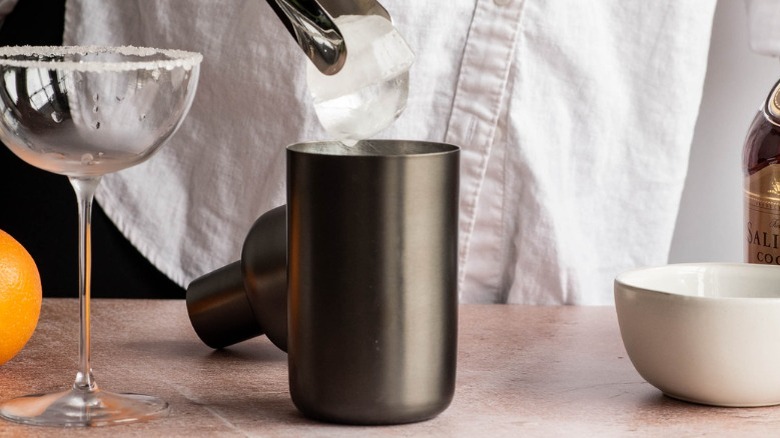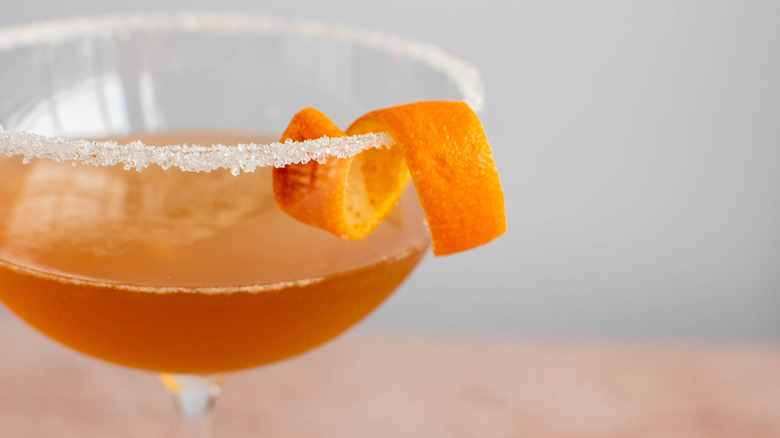Classic Sidecar Cocktail Recipe
The sidecar is a vintage pre-Prohibition cocktail that was said to have been first concocted at Harry's New York Bar in Paris. It may have been invented to celebrate the first Armistice Day in 1919 (World War I having just ended the previous year), and the name might have something to do with the motorcycle sidecars used to transport troops and supplies between the trenches. Recipe developer Michelle McGlinn, however, theorizes that the moniker may have to do with the fact that "the drink is sometimes served with a 'sidecar' shot of the shaker residue, which is basically the melted ice cubes mixed with the cognac and some froth."
McGlinn describes the sidecar as "a citrusy drink, great for one who wants something between a margarita and an old fashioned." She acknowledges that the sidecar is "supposed to be a little sour," but admits that she herself prefers a sweeter cocktail. If you feel the same way, you might want to add some simple syrup to the drink. While the recipe given here only consists of the standard ingredients, McGlinn says she did tinker with the ratio a bit. A classic sidecar will have 2 parts cognac or brandy to 1 part orange liqueur and 1 part lemon juice. McGlinn, with her preference for sweet over sour, reduces the amount of the third.
Assemble the classic sidecar ingredients
To make this drink, you'll need lemon juice, orange liqueur, and cognac, plus some sugar and orange peel for the garnish. You can also use brandy as an alternative to cognac. Basically, brandy is to cognac as sparkling wine is to champagne: All cognacs are a type of brandy, but only some get the more upscale tag as they're actually supposed to originate in the named region in France.
As for the orange liqueur, you can use any kind you like, from top-shelf Grand Marnier to bargain-bin triple sec. McGlinn holds the middle ground with Cointreau.
Prepare the glass
McGlinn likes to use a coupe glass for this drink, although a martini glass would also work. She also chills the glass in the freezer for a few minutes before adding the sugar rim.
"The sugar rim," McGlinn explains, "is used because the drink needs a bit of sweetness to balance all the acidity." To make it, pour the sugar into a shallow dish that's large enough to fit the glass. Moisten the rim of the glass -– McGlinn does this by running a slice of orange around it, but you can also use a lemon wedge or just a bit of water. Once the rim is moist, dip the glass into the sugar, then turn it right-side up.
Build the cocktail
To make a proper sidecar, you'll be shaking, not stirring (you're welcome, 007). If you don't have a dedicated shaker, any lidded container, such as a glass jar, thermos, or travel mug, will work.
Take your shaker and fill it with a few ice cubes, as well as the lemon juice, orange liqueur, and cognac. Cover the shaker and shake it vigorously for about 20 seconds. Once the shaker feels cold — almost too cold to comfortably hold — your drink is done.
Garnish the cocktail
Strain the sidecar into the sugar-rimmed glass, then garnish it with a twist of orange peel. As to why McGlinn chose to use orange peel rather than the lemon peel used in some Sidecar recipes, this again reflects her preference for a sweeter drink. "I think [the lemon] makes it too tart," she offers, adding that the orange peel complements the sweeter flavor of the orange liqueur.
Classic Sidecar Cocktail Recipe
For a refreshing drink that's a little sour and a little sweet, somewhere between an old fashioned and a margarita, try this vintage pre-Prohibition cocktail.
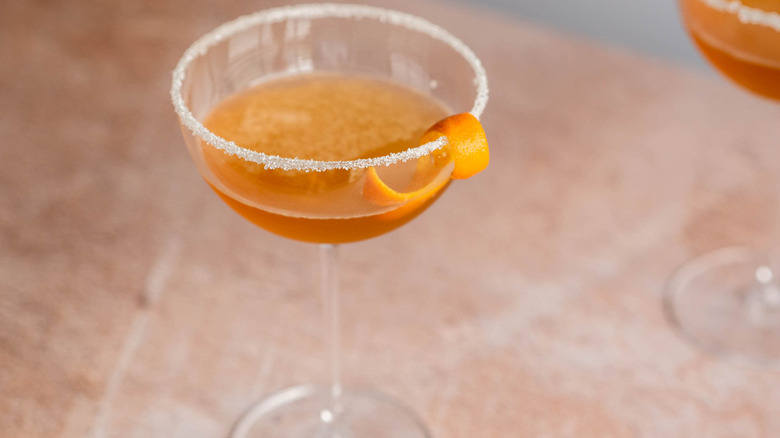
Ingredients
- ¼ cup granulated sugar
- 1 lemon or orange wedge
- 2 ounces cognac
- ¾ ounce orange liqueur
- ½ ounce lemon juice
- Twist of orange peel
Directions
- Chill a coupe or martini glass in the freezer to chill.
- Spread sugar on a small plate.
- Remove glass from freezer and moisten edges by running a lemon or orange wedge along the edges.
- Dip the rim of the glass in the sugar, then turn right-side up. Set aside.
- Place a few ice cubes in a cocktail shaker.
- Pour cognac, orange liqueur, and lemon juice over the ice.
- Close the shaker and shake well for 20 seconds, or until the shaker feels cold to the touch.
- Strain the sidecar into the prepared glass. Garnish with a twist of orange peel.
Nutrition
| Calories per Serving | 404 |
| Total Fat | 0.1 g |
| Saturated Fat | 0.0 g |
| Trans Fat | 0.0 g |
| Cholesterol | 0.0 mg |
| Total Carbohydrates | 60.7 g |
| Dietary Fiber | 0.7 g |
| Total Sugars | 59.0 g |
| Sodium | 3.0 mg |
| Protein | 0.3 g |
